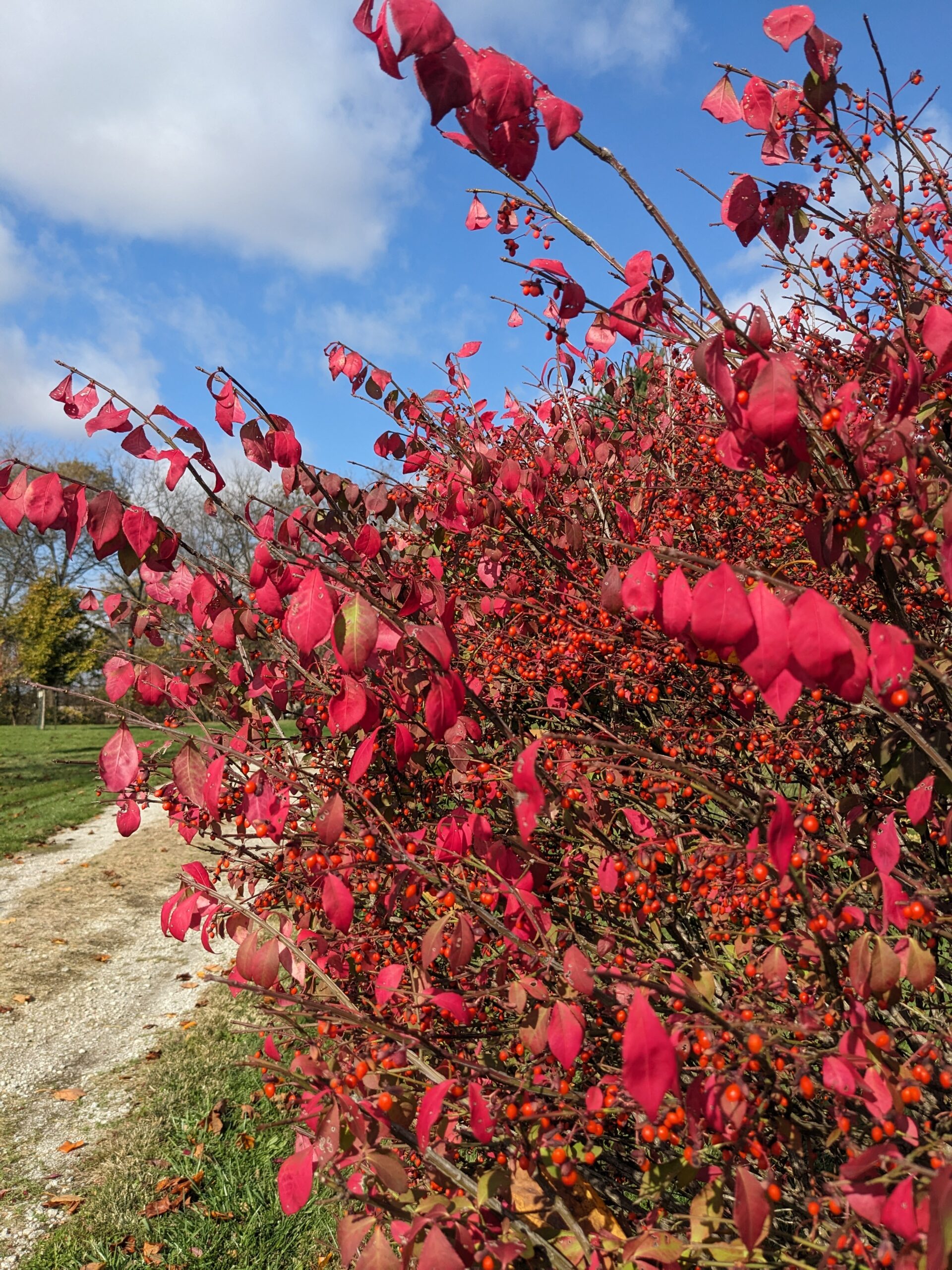Bark to Basics Part II: Identifying Trees at New Salem by Their Bark
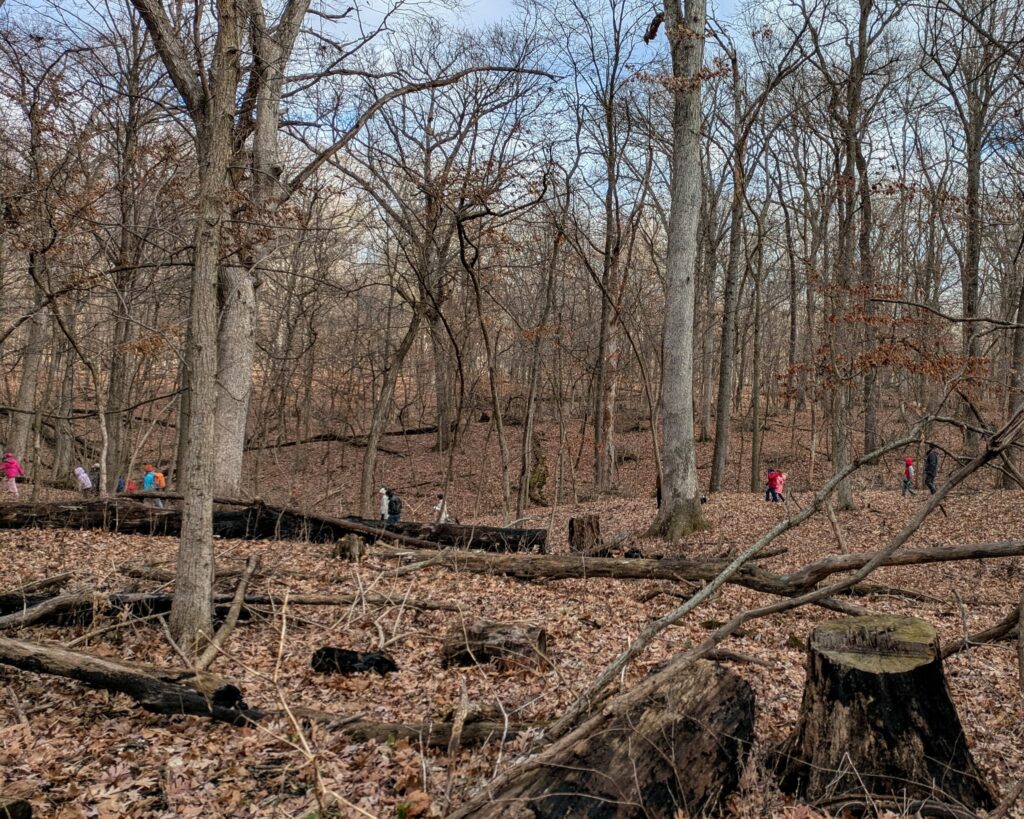
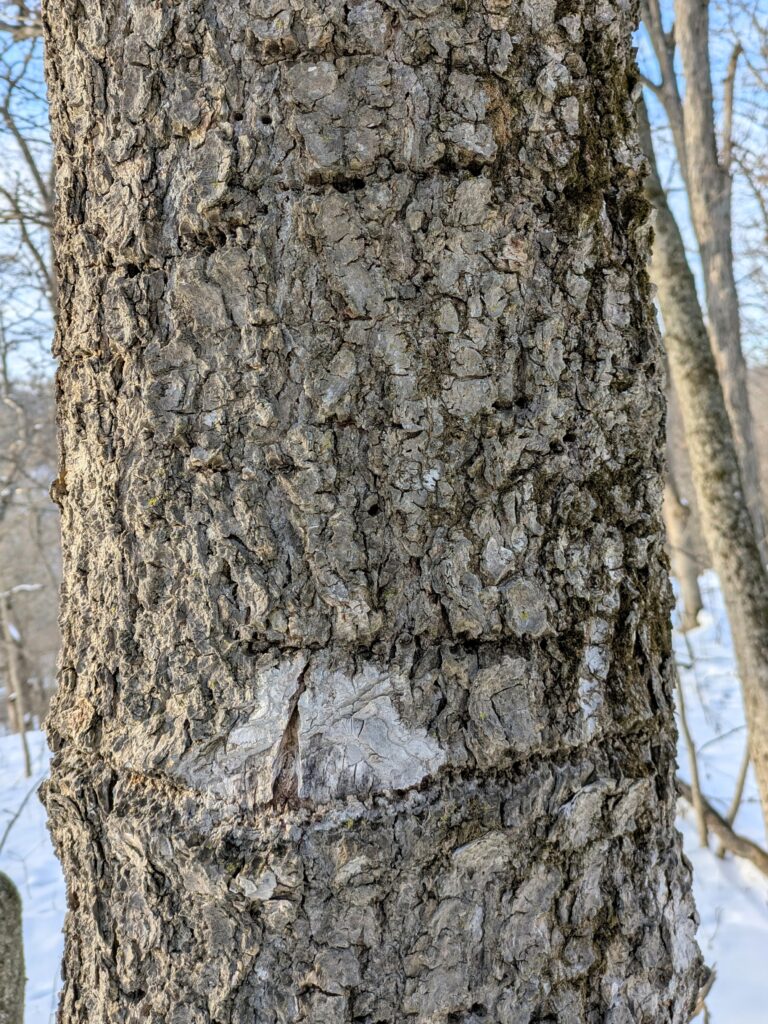
Tree #6
Ohio buckeye (Aesculus glabra)
This is the only buckeye species native to Central Illinois, though other species may occasionally be found in garden settings where they are planted. The trunk bark is gray and rough-textured, developing a scaly, warty appearance and slight furrows as it matures. This particular tree, along with several others along Cardinal Ridge Trail, has been frequently visited by yellow-bellied sapsuckers, which drill rows of holes into the bark to feed on the sap. While buckeye leaves and well-known seeds are toxic to most animals, the tree supports a wide range of insects, particularly those drawn to its tubular pale yellow flowers— a favorite nectar source for hummingbirds.
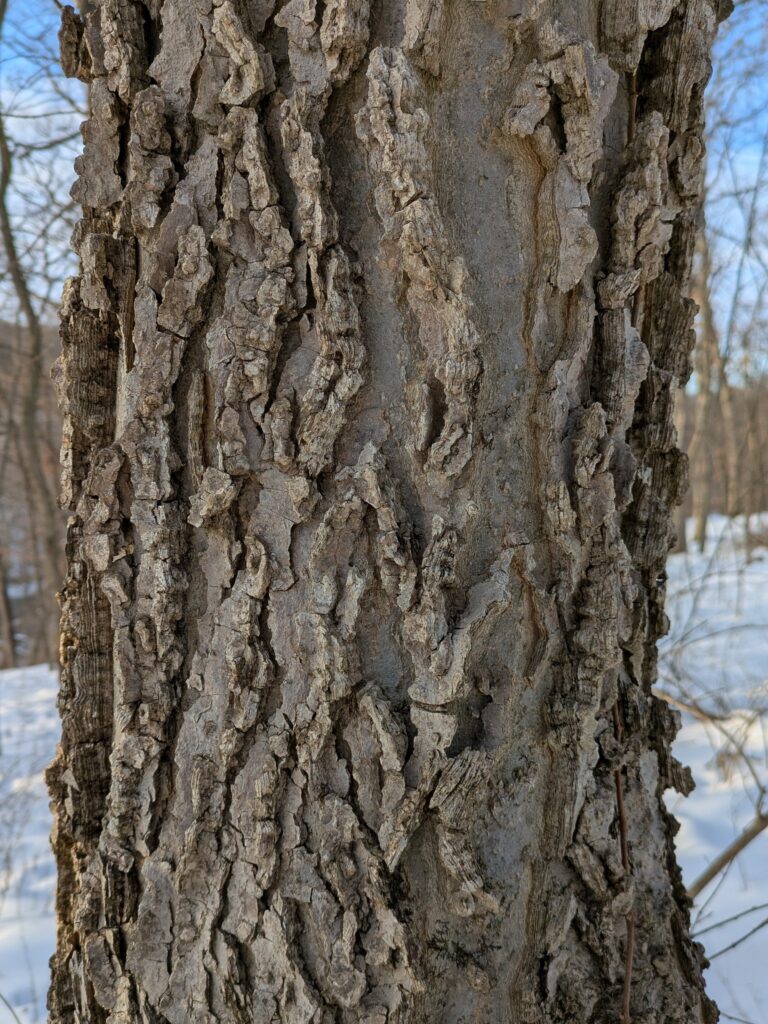
Tree #7
Common Hackberry (Celtis occidentalis)
One of the easiest trees to identify by bark alone, the hackberry stands out with its distinctive pale gray, warty bark. This hardy species is common throughout Illinois and can be found throughout the park as well. Hackberry supports a wide range of wildlife, providing small, round fruit that is a food source for numerous bird species, especially during the fall and winter months. The tree also hosts countless insects, including the larvae of various butterfly and moth species, making it a vital part of the local ecosystem.
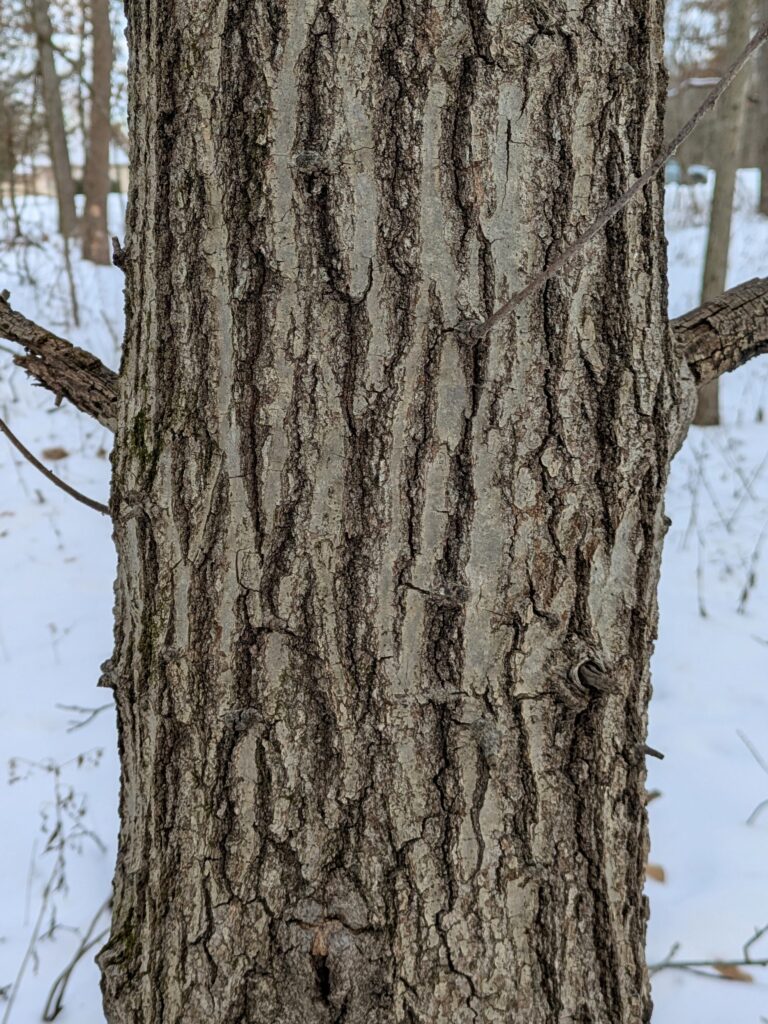
Tree #8
Shingle oak (Quercus imbricaria)
During the growing season, this oak is often misidentified due to its unique, unlobed leaves, which differ from the typical oak foliage most people expect. It is the only oak species in Central Illinois with unlobed leaves. The bark of mature trees is gray to brown, rough-textured, and narrowly furrowed, with scaly ridges. In winter, this oak can often be recognized by the presence of round, woody galls found on its twigs, which are caused by tiny wasps. Its common name, “Shingle Oak,” originates from the practice of early settlers splitting its tough wood to make shingles, a testament to the tree’s usefulness and value to New Salem’s first residents.
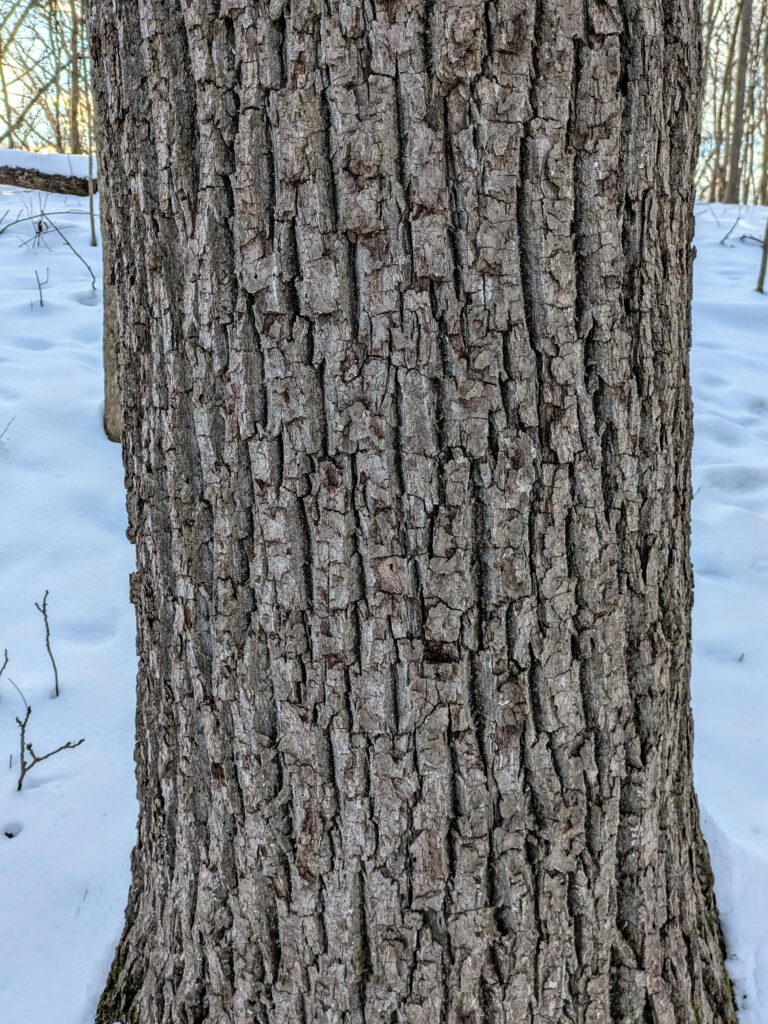
Tree #9
Black walnut (Juglans nigra)
Black walnut is an important tree species in the forest canopy at New Salem. Widely distributed across Illinois, it is a key provider of food for wildlife, with its nutrient-rich nuts serving as a vital resource for squirrels, birds, and other animals. The tree is also highly prized for its timber, ranking as the most valuable hardwood species grown in the state. The bark of black walnut can vary somewhat by age. Mature specimens develop deeply furrowed, gray to nearly black bark
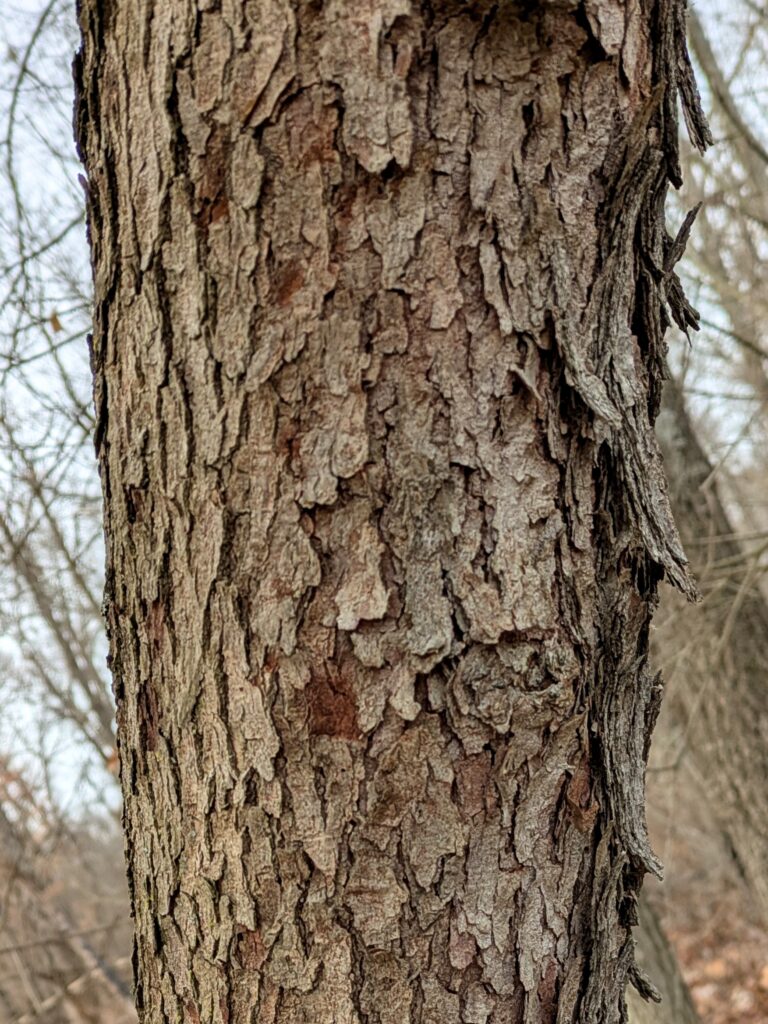
Tree #10
Eastern Redbud (Celtis canadensis)
Redbud is a beloved springtime favorite at New Salem, an understory tree commonly found along forest edges where it self-seeds and reaches upward toward the sun. Its vibrant pink flower clusters bloom in mid- to late April, a sure sign of spring. The bark is reddish-gray, rough, and covered in flattened, irregular scales. During the growing season, its distinct heart-shaped leaves make it easy to identify. Even in winter, the tree can be recognized by its persistent seed pods, which remain attached long after the flowers have faded.
If you enjoyed this challenge, please return to the Facebook post and join the comments. And, come back next week for the final 5 species in our Tree Bark Challenge!
Find more information about these and many other Illinois trees and shrubs at: Trees, Shrubs, and Woody Vines of Illinois
